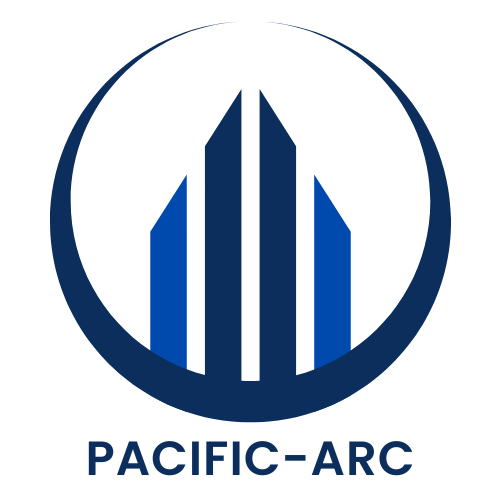Buying a house is a big deal, especially when the price tag hits the half-million mark. Suddenly, that dream home looks like a castle with a moat—one that requires a serious down payment to cross the drawbridge. But fear not! Navigating the world of down payments doesn’t have to feel like deciphering ancient hieroglyphics.
Table of Contents
ToggleUnderstanding Down Payments
Down payments represent a percentage of a home’s purchase price paid upfront. A typical down payment for a $500,000 house usually ranges from 3% to 20%. Individuals who opt for a 3% down payment would need $15,000, while a 20% down payment would require $100,000.
Calculating an appropriate down payment involves assessing financial situations, credit scores, and mortgage options. Lower down payments can result in higher monthly mortgage payments and mortgage insurance. By contrast, a larger down payment typically leads to lower monthly payments and eliminates private mortgage insurance costs.
Considering down payment assistance programs can help buyers overcoming financial obstacles. Many state programs exist to provide aid based on income or location. Additionally, some grants may not require repayment, making them particularly beneficial for first-time homebuyers.
Evaluating different mortgage types can also influence down payment choices. Conventional loans often require 20% down to avoid additional insurance costs, while FHA loans allow for lower down payments ranging from 3.5%. Understanding the requirements of various loans empowers buyers to make informed decisions.
Finally, it’s essential to remember that down payment amounts affect loan terms and overall affordability. Higher initial payments decrease the loan amount, leading to broader financial stability. Buyers focused on long-term homeownership should prioritize saving for an appropriate down payment to enhance their purchasing power.
Typical Down Payment Amounts

Understanding typical down payment amounts helps buyers navigate the home-buying process more effectively. Buyers can choose from various down payment percentages, impacting their financial situation significantly.
Percentage Breakdown
Down payment percentages generally range from 3% to 20%. For a $500,000 house, a 3% down payment requires $15,000, while a 20% down payment demands $100,000. Many buyers opt for 5% to 10% down payments, equating to $25,000 to $50,000. First-time homebuyers often qualify for lower down payments with programs that support their purchasing journey. Choosing a lower percentage increases monthly payments, which can affect overall budget planning.
Factors Influencing Down Payment
Several factors influence the chosen down payment amount. Buyers assess their financial situation, including income, savings, and existing debts. Credit scores also play a critical role; higher scores can secure better mortgage terms, allowing for lower down payments. Loan types like conventional and FHA loans offer different down payment requirements. Location and property type may influence local market trends, affecting what buyers decide. Lastly, personal comfort levels with monthly mortgage payments guide many buyers in their final decision.
Options for Financing a Down Payment
Understanding financing options for a down payment helps simplify the home-buying journey. Several pathways exist for potential homeowners looking to secure funding.
Conventional Loans
Conventional loans often require a down payment between 5% and 20%. A $500,000 house, for example, translates to a down payment ranging from $25,000 to $100,000. Choosing a larger down payment can qualify borrowers for better interest rates and lower monthly payments. Lenders assess credit scores and financial stability for conventional loans, impacting eligibility. Monthly mortgage insurance commonly applies if the down payment is less than 20%. Many buyers appreciate the flexibility conventional loans offer, allowing them to use personal savings for their contributions.
Government-Backed Loans
Government-backed loans, such as FHA and VA loans, provide beneficial terms for various buyers. FHA loans enable down payments as low as 3.5% for eligible applicants, equating to $17,500 on a $500,000 property. VA loans, available for veterans and active-duty service members, do not mandate a down payment, making homeownership more accessible. These loan types feature lenient credit requirements, appealing to first-time buyers. Borrowers often benefit from lower closing costs and affordable interest rates, particularly with government-backed options. Exploring these loans helps potential homeowners maximize their purchasing power.
Strategies for Saving for a Down Payment
Saving for a down payment on a $500,000 house demands strategic planning. Implement effective techniques to build a solid financial foundation.
Budgeting Tips
Establishing a comprehensive budget proves essential for saving efficiently. Track monthly income and expenses to identify potential savings areas. Allocate specific amounts for necessities, entertainment, and savings goals. Reduce discretionary spending by canceling unused subscriptions or dining out less frequently. Set up an automatic transfer to a dedicated savings account after each paycheck, fostering a habit of saving over time. Using budgeting apps can provide clearer insights and track progress.
Government Assistance Programs
Various government assistance programs exist to aid first-time homebuyers. FHA loans allow down payments as low as 3.5%, making homes more accessible. VA loans present an option with no down payment for eligible veterans and active-duty service members. State and local programs also offer grants or loans to assist with down payments and closing costs. Research eligibility requirements for these programs as they can significantly lower upfront expenses and help maximize purchasing power.
Navigating the down payment landscape for a $500,000 house can feel daunting but understanding the options available makes it manageable. By assessing personal finances and exploring various mortgage types buyers can find a down payment strategy that suits their needs. Whether opting for a smaller down payment with higher monthly costs or a larger upfront investment to lower overall payments the right choice hinges on individual circumstances.
Utilizing down payment assistance programs and implementing smart saving strategies can further enhance affordability. Ultimately prioritizing a well-planned down payment can significantly impact homeownership success and long-term financial stability.





